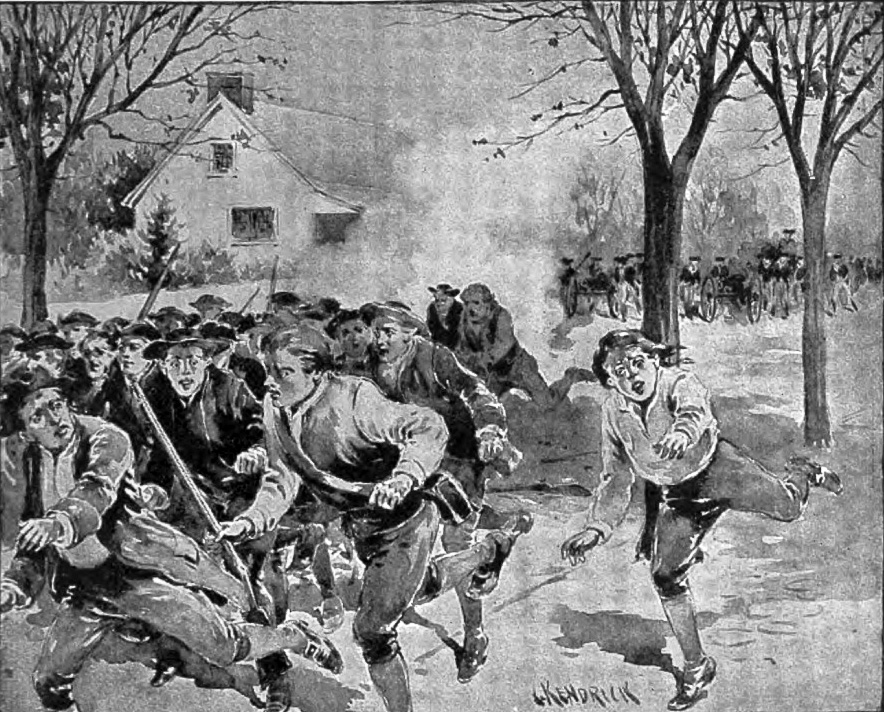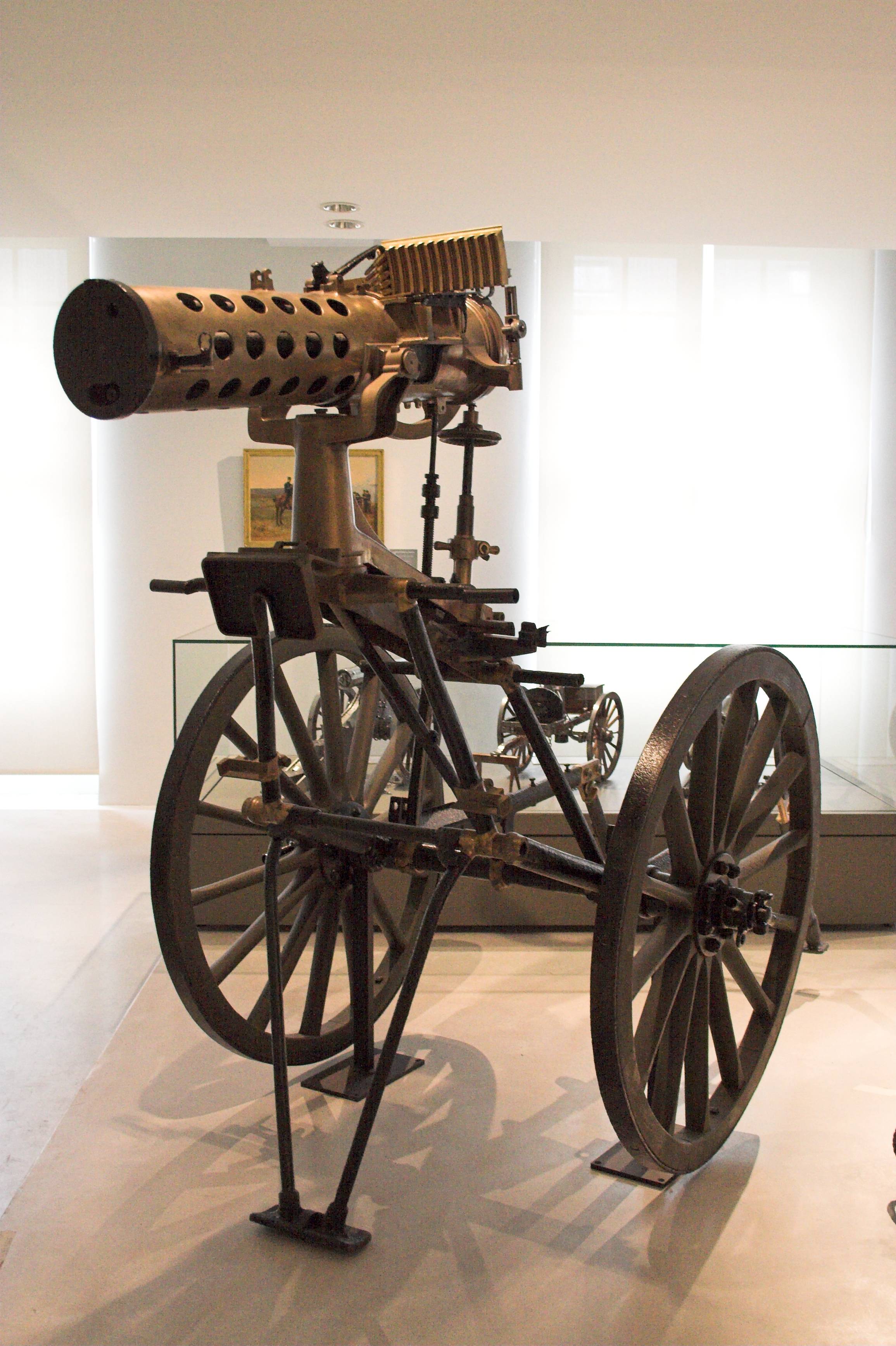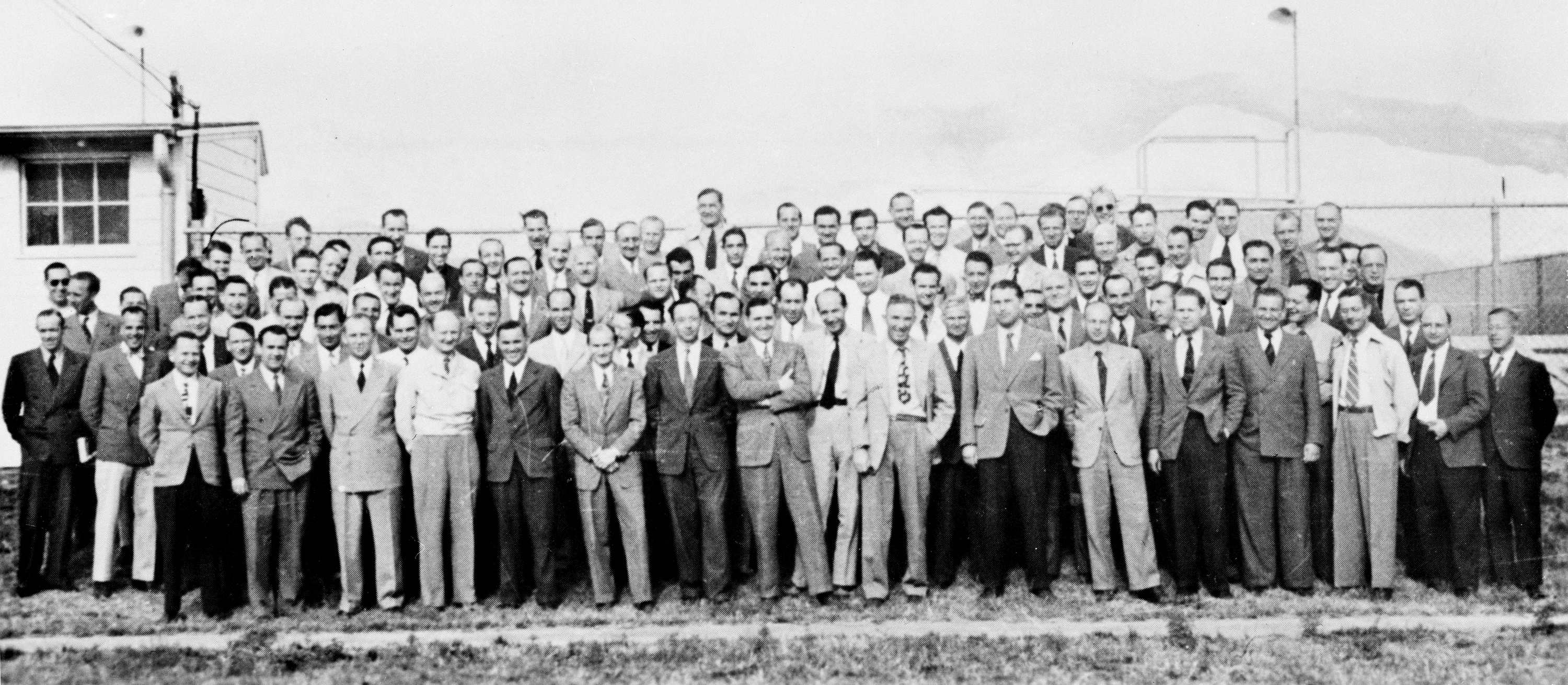|
Coffee Mill Gun
The Agar gun (or Ager) was an early rapid fire machine gun developed during the US Civil War. The weapon was nicknamed the Coffee Mill Gun, and was also called the Union Repeating Gun. History During the American Civil War, Civil War, inventors were encouraged to create new and better weapons. The Agar machine gun was one of about fifty or so hand-cranked machine guns developed for the war during this period. It was named after its inventor, Wilson Agar (sometimes spelled Wilson Ager). The gun was nicknamed the "Coffee Mill Gun" because the crank and the ammunition hopper on the top of the weapon gave it a look similar to that of a common kitchen coffee grinder. Agar advertised the gun as "an army in six feet square", due to its high rate of fire. In 1861, the Agar machine gun was demonstrated to President Abraham Lincoln, who was very impressed by the weapon. Lincoln wrote "I saw this gun myself, and witnessed some experiments with it, and I really think it is worth the attent ... [...More Info...] [...Related Items...] OR: [Wikipedia] [Google] [Baidu] |
Springfield Armory
The Springfield Armory, more formally known as the United States Armory and Arsenal at Springfield located in the city of Springfield, Massachusetts, was the primary center for the manufacture of United States military firearms from 1777 until its closing in 1968. It was the first federal armory and one of the first factories in the United States dedicated to the manufacture of weapons. The site is preserved as the Springfield Armory National Historic Site, Western Massachusetts' only unit of the National Park Service, national park system. It features the world's largest collection of historic American firearms. Famous first as the United States' primary arsenal during the American Revolutionary War, and then as the scene of a confrontation during Shays' Rebellion, the Springfield Armory in the 19th and 20th centuries became the site of numerous technological innovations of global importance, including interchangeable parts, the assembly line style of mass production, and moder ... [...More Info...] [...Related Items...] OR: [Wikipedia] [Google] [Baidu] |
Washington Arsenal
Fort Lesley J. McNair is a United States Army post located on the tip of Greenleaf Point, the peninsula that lies at the confluence of the Potomac River and the Anacostia River in Washington, D.C. To the peninsula's west is the Washington Channel, while the Anacostia River is on its south side. Originally named Washington Arsenal, the fort has been an army post for more than 200 years, third in length of service, after the United States Military Academy at West Point and the Carlisle Barracks. The fort is named for General Lesley James McNair, who was killed in action by friendly fire in Normandy, France during World War II. History Early history The military reservation was established in 1791, on about at the tip of Greenleaf Point. Major Pierre Charles L'Enfant included it in his plans for Washington, the Federal City, as a significant site for the capital defense. On L'Enfant's orders, Andre Villard, a French follower of Marquis de Lafayette, placed a one-gun batt ... [...More Info...] [...Related Items...] OR: [Wikipedia] [Google] [Baidu] |
American Civil War Weapons
American(s) may refer to: * American, something of, from, or related to the United States of America, commonly known as the "United States" or "America" ** Americans, citizens and nationals of the United States of America ** American ancestry, people who self-identify their ancestry as "American" ** American English, the set of varieties of the English language native to the United States ** Native Americans in the United States, indigenous peoples of the United States * American, something of, from, or related to the Americas, also known as "America" ** Indigenous peoples of the Americas * American (word), for analysis and history of the meanings in various contexts Organizations * American Airlines, U.S.-based airline headquartered in Fort Worth, Texas * American Athletic Conference, an American college athletic conference * American Recordings (record label), a record label previously known as Def American * American University, in Washington, D.C. Sports teams Soccer * B ... [...More Info...] [...Related Items...] OR: [Wikipedia] [Google] [Baidu] |
Lowell Machine Gun
Lowell may refer to: Places United States * Lowell, Arkansas * Lowell, California * Lowell, Florida * Lowell, Idaho * Lowell, Indiana * Lowell, Bartholomew County, Indiana * Lowell, Maine * Lowell, Massachusetts ** Lowell National Historical Park ** Lowell (MBTA station) ** Lowell Ordnance Plant * Lowell, Michigan * Lowell, North Carolina * Lowell, Washington County, Ohio * Lowell, Seneca County, Ohio * Lowell, Oregon * Lowell, Vermont, a New England town ** Lowell (CDP), Vermont, the main village in the town * Lowell, West Virginia * Lowell (town), Wisconsin ** Lowell, Wisconsin, a village within the town of Lowell * Lowell Hill, California * Lowell Point, Alaska *Lowell Township (other) Other countries * Lowell glacier, near the Alsek River, Canada Elsewhere * Lowell (lunar crater) * Lowell (Martian crater) Institutions in the United States Arizona * Lowell Observatory, astronomical non-profit research institute, Flagstaff California * Lo ... [...More Info...] [...Related Items...] OR: [Wikipedia] [Google] [Baidu] |
Gorgas Machine Gun
The Gorgas machine gun (or sometimes just a Gorgas gun) was a manually cranked prototype machine gun, the creation of Confederate States General Josiah Gorgas. It had a single smooth-bore barrel. The barrel was fed from a revolver-like ring, but with an axis of rotation perpendicular to the bore, rather than the usual revolver configuration with parallel axes. The cylinder housed 18 copper-lined chambers that were muzzle loaded from the outer side of the ring. The interior side of the multiple-chamber ring was lined with the corresponding 18 percussion cap nipples. The ring was rotated by a hand lever. The gun had a cast iron receiver. The sole exemplar built was not used in combat, not having been sufficiently perfected. See also *Agar gun *Centrifugal gun * Confederate Revolving Cannon *Gatling gun * Puckle gun *Revolver cannon A revolver cannon is a type of autocannon, commonly used as an aircraft gun. It uses a cylinder with multiple chambers, like those of a revolver ... [...More Info...] [...Related Items...] OR: [Wikipedia] [Google] [Baidu] |
Gatling Gun
The Gatling gun is a rapid-firing multiple-barrel firearm invented in 1861 by Richard Jordan Gatling. It is an early machine gun and a forerunner of the modern electric motor-driven rotary cannon. The Gatling gun's operation centered on a cyclic multi-barrel design which facilitated cooling and synchronized the firing-reloading sequence. As the handwheel is cranked, the barrels rotate and each barrel sequentially loads a single cartridge from a top-mounted magazine, fires off the shot when it reaches a set position (usually at 4 o'clock), then ejects the spent casing out of the left side at the bottom, after which the barrel is empty and allowed to cool until rotated back to the top position and gravity-fed another new round. This configuration eliminated the need for a single reciprocating bolt design and allowed higher rates of fire to be achieved without the barrels overheating quickly. One of the best-known early rapid-fire firearms, the Gatling gun saw occasional use ... [...More Info...] [...Related Items...] OR: [Wikipedia] [Google] [Baidu] |
Rifle Musket
A rifled musket, rifle musket, or rifle-musket is a type of firearm made in the mid-19th century. Originally the term referred only to muskets that had been produced as a smoothbore weapon and later had their barrels replaced with rifled barrels. The term later included rifles that directly replaced, and were of the same design overall as, a particular model of smoothbore musket. History and development In the early 19th century, there were rifles, and there were muskets. Muskets were smoothbore muzzle-loading weapons, firing round lead balls or buck and ball ammunition, that were also designed to accept a bayonet. Rifles were similar in that they used the same kind of flintlock or caplock firing mechanism, but the main difference was that their barrels were rifled – that is, their barrels had grooves cut into the interior surface which would cause the bullet to spin as it left the barrel. Rifles have the advantage of long range accuracy, because spinning bullets hav ... [...More Info...] [...Related Items...] OR: [Wikipedia] [Google] [Baidu] |
Brass
Brass is an alloy of copper (Cu) and zinc (Zn), in proportions which can be varied to achieve different mechanical, electrical, and chemical properties. It is a substitutional alloy: atoms of the two constituents may replace each other within the same crystal structure. Brass is similar to bronze, another copper alloy, that uses tin instead of zinc. Both bronze and brass may include small proportions of a range of other elements including arsenic (As), lead (Pb), phosphorus (P), aluminium (Al), manganese (Mn), and silicon (Si). Historically, the distinction between the two alloys has been less consistent and clear, and modern practice in museums and archaeology increasingly avoids both terms for historical objects in favor of the more general "copper alloy". Brass has long been a popular material for decoration due to its bright, gold-like appearance; being used for drawer pulls and doorknobs. It has also been widely used to make utensils because of its low melti ... [...More Info...] [...Related Items...] OR: [Wikipedia] [Google] [Baidu] |
Steel
Steel is an alloy made up of iron with added carbon to improve its strength and fracture resistance compared to other forms of iron. Many other elements may be present or added. Stainless steels that are corrosion- and oxidation-resistant typically need an additional 11% chromium. Because of its high tensile strength and low cost, steel is used in buildings, infrastructure, tools, ships, trains, cars, machines, electrical appliances, weapons, and rockets. Iron is the base metal of steel. Depending on the temperature, it can take two crystalline forms (allotropic forms): body-centred cubic and face-centred cubic. The interaction of the allotropes of iron with the alloying elements, primarily carbon, gives steel and cast iron their range of unique properties. In pure iron, the crystal structure has relatively little resistance to the iron atoms slipping past one another, and so pure iron is quite ductile, or soft and easily formed. In steel, small amounts of ... [...More Info...] [...Related Items...] OR: [Wikipedia] [Google] [Baidu] |
Ordnance Department
The United States Army Ordnance Corps, formerly the United States Army Ordnance Department, is a sustainment branch of the United States Army, headquartered at Fort Lee, Virginia. The broad mission of the Ordnance Corps is to supply Army combat units with weapons and ammunition, including at times their procurement and maintenance. Along with the Quartermaster Corps and Transportation Corps, it forms a critical component of the U.S. Army logistics system. The U.S. Army Ordnance Corps mission is to support the development, production, acquisition, and sustainment of weapon systems, ammunition, missiles, electronics, and ground mobility materiel during peace and war to provide combat power to the U.S. Army. The officer in charge of the branch for doctrine, training, and professional development purposes is the Chief of Ordnance. The current Chief of Ordnance is Brigadier General Michael B. Lalor. History Colonial period to War of Independence During the colonial era in Ame ... [...More Info...] [...Related Items...] OR: [Wikipedia] [Google] [Baidu] |




